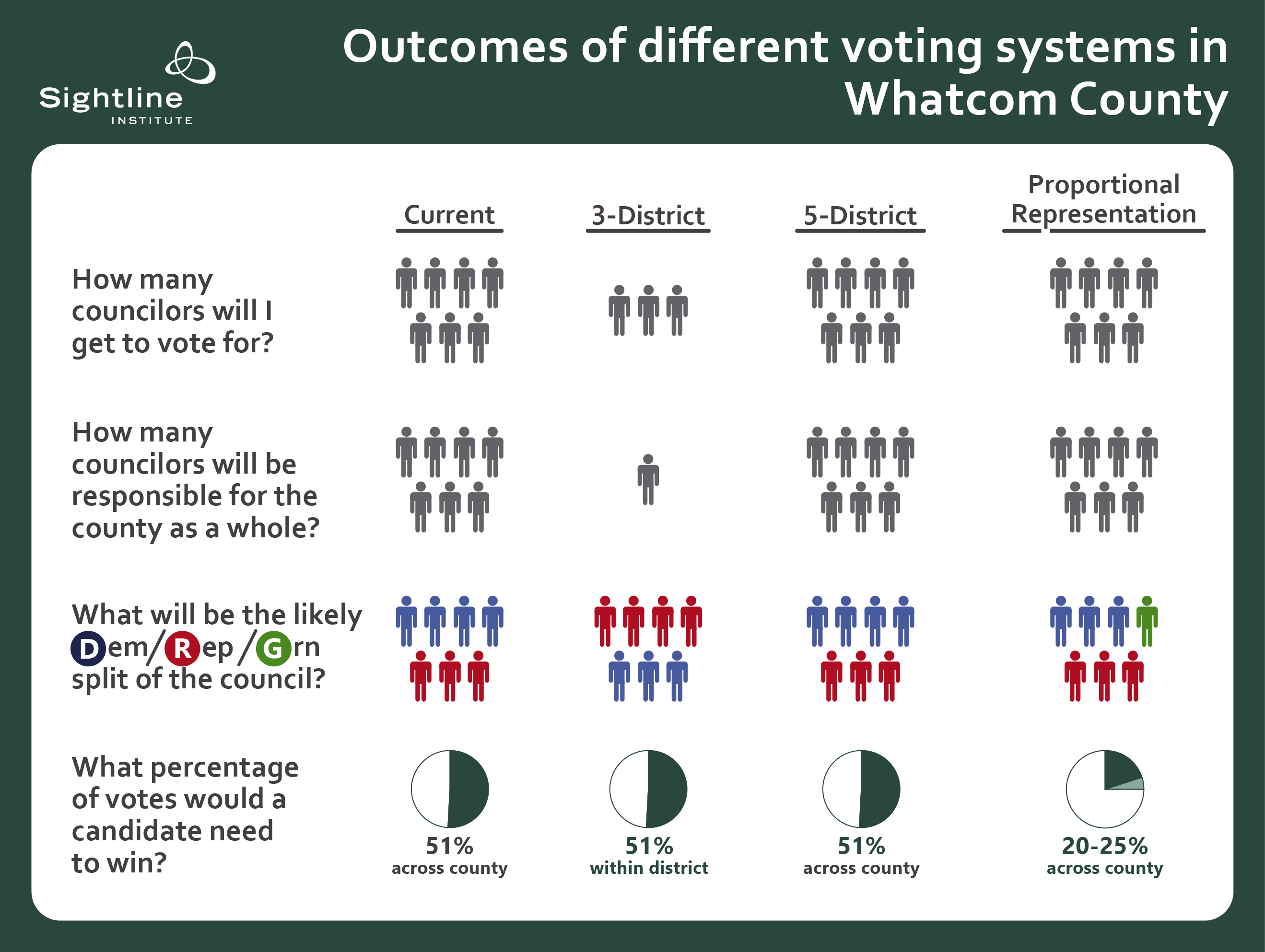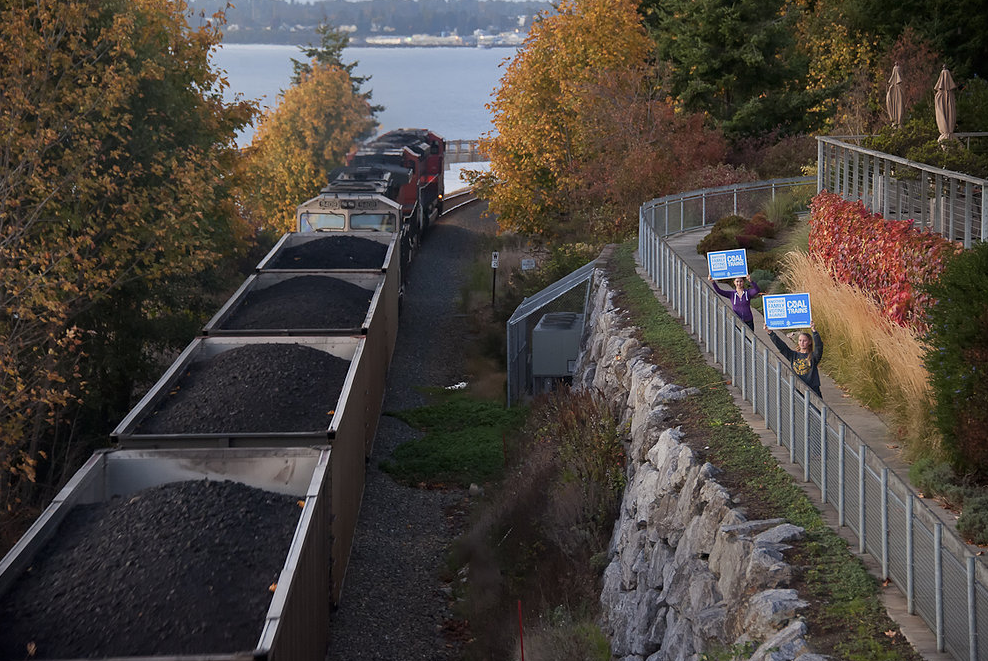[prettyquote align=”right”]”Cascadia voters could steer clear of the perils of district-only voting by choosing the safe harbor of proportional representation.”[/prettyquote] On November’s ballot, Whatcom County voters will see two proposed charter amendments to alter the way they elect county councilors. One would change to district-only voting, and the other would keep countywide voting but switch from three districts to five during primary elections. In my last two articles, I described how district-only voting fails voters while countywide voting serves them better. Despite its abysmal performance, district-only voting lures Cascadian localities with its siren song. Some, like Whatcom, are drawn in when moneyed interests hope to use it to their advantage; others seek it as a supposed cure to an illegal lack of representation (Yakima); while others follow calls for accountability (Seattle) or more geographically diverse representation (Portland). But there is another way.
Whatcom County, WA, Hands Coal a Sack of No
Election results are in for Whatcom County, Washington, where a proposal for a giant coal export terminal puts communities on the front lines of the fight against dirty energy. Thanks to a flood of money from coal interests, voters approved a coal-backed proposition to change the county voting system to district-only voting. This plan likely … Read more







